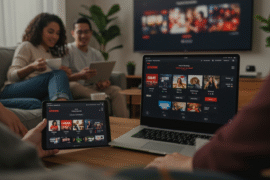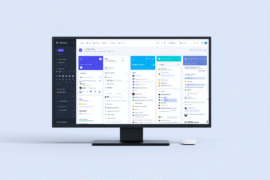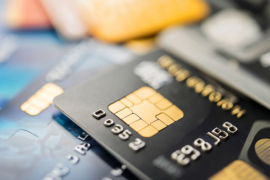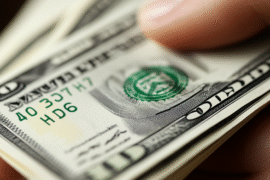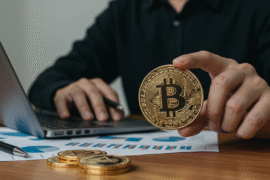This article may contain references to products or services from one or more of our advertisers or partners. We may receive compensation when you click on links to those products or services. Nonetheless, our opinions are our own.
The information presented in this article is accurate to the best of our knowledge at the time of publication. However, information is subject to change, and no guarantees are made about the continued accuracy or completeness of this content after its publication date.
- Key Highlights
- Introduction
- Understanding Discretionary Spending
- Defining Discretionary vs. Essential Spending
- The Role of Emotions in Discretionary Spending
- Conclusion
- Frequently Asked Questions
- What is the difference between discretionary spending and non-discretionary spending?
- How can I monitor my extra spending more effectively?
- Are there apps that can help you keep track of spending on things you do not need?
- How does impulse buying influence daily spending?
- Can people change their spending habits over time?
- Recommended Reads
Key Highlights
- Discretionary spending is for things that you don’t need. It can influence economic signs like GDP.
- Feelings and social factors are significant in making choices about discretionary spending.
- It is key to understand what is essential and what is discretionary for managing money well.
- Simple ideas, like making a budget and identifying what motivates you to spend, can help you manage discretionary spending.
- Using budgeting apps and having realistic money goals can help you control your discretionary spending.
Introduction
Discretionary spending is key for the economy. It boosts consumer spending, a significant part of Gross Domestic Product (GDP). This type of spending comes after people cover their basic needs. It reflects how consumers behave and the state of the economy. Understanding what affects discretionary spending can help people make more intelligent choices with their money. It also allows policymakers to see how well the economy is performing.
Understanding Discretionary Spending
Discretionary spending is money spent on things that are not necessary. People decide how to use this money based on what they want, not what they need. Whether buying a new gadget or planning a trip, these choices make life better and affect the economy.
Many things influence how much people spend on non-essential items. These include income, shoppers’ feelings, interest rates, and social trends. Examining these factors helps businesses, government workers, and economists understand spending habits and what they mean for the economy.
Voted "Best Overall Budgeting App" by Forbes and WSJ
Monarch Money helps you budget, track spending, set goals, and plan your financial future—all in one app.
Get 50% OFF your first year with code MONARCHVIP
Defining Discretionary vs. Essential Spending
For good money planning, it is imperative to know the difference between optional and required costs. Optional costs are not needed and include things like dining out, fun activities, and trips. Required costs are necessary and include things we need like housing, bills, food, healthcare, and paying back debts.
The part of GDP related to discretionary spending changes based on the economy and how people spend their money. A decrease in this kind of spending can indicate that people feel uncertain or that the economy is struggling. Understanding these factors helps people better plan their finances and aids policymakers in assessing the economy’s performance.
The Role of Emotions in Discretionary Spending
Emotions play a significant role in how we decide to spend money. We often want to feel happy, fit in with others, or feel comforted. This connection between feelings and buying can lead to overspending and financial issues.
Marketers use feelings in their ads. To increase sales, they trigger excitement, fear of missing out, and the wish for quick rewards. They encourage fast purchases by creating strong ads and targeting specific customer groups.
Common Emotional Spending Triggers:
- Retail therapy: Shopping helps you feel better or relax.
- Status symbol purchases: Buying costly items shows that you are successful.
- Fear of missing out (FOMO): You buy things to feel part of the group or not feel left out.
Social media and ads greatly influence how much people spend on things they don’t need. Looking at selected images and advertisements daily changes what shoppers feel they need or want. Tailored ads, made with data analysis, make it harder for people to say no to buying things on a whim.
How Ads Influence Spending Habits
Whether online or offline, advertising gets people’s attention with strong messages and pictures. It creates a sense of urgency, making products feel critical instead of just options.
Social media strengthens this effect by repeatedly showing us images of influencers and friends with appealing lifestyles. This can confuse what we really need with what we want, leading us to spend more money.
Short-term deals, influencer endorsements, and focused online ads can encourage faster buying habits. Knowing about these strategies can help people make smarter decisions with their money.
Social media affects how we view what we need by showing ideal lifestyles. When we see influencers and friends display costly items, trips, and trendy products, it can feel like we have to be part of it. This focus on looking good leads many people to spend money rather than thinking about their money situation.
People can reduce extra spending and maintain stability by thinking carefully about online influences and matching purchases with money goals.
A Basic Guide to Managing Extra Spending
Spending money wisely can improve your life. However, spending too much can lead to money issues. Having innovative plans can help you develop good money habits.
Assessing Your Spending Habits
Tracking your expenses is the first step to managing your spending. Budget tools like spreadsheets and money apps help you see how you spend. They highlight places where you can save money.
Checking your spending about your income can show you how much you can save, invest, or spend on big things. This innovative method helps ensure your money goals are still achievable.
Tools and Resources Needed
Many tools and resources can help you manage your spending. This includes standard budgeting methods and apps that track your costs. They also offer helpful money advice.
Budgeting Tools
| Tool | Description |
|---|---|
| Spreadsheet | Customizable and straightforward for tracking income and expenses. |
| Budgeting Apps | Offer automated expense tracking, categorization, and budgeting features. |
| Spending Trackers | Provide a visual representation of spending patterns over time. |
Online resources, such as money blogs and financial education websites, offer tips and techniques that can help you understand money better and spend wisely.
Step 1: Setting Realistic Budgeting Goals
Setting clear budget goals helps control spending. You need to know your money goals for the short term and long term. These goals could include saving for a trip, building an emergency fund, paying off debt, or getting ready for retirement.
A good budget should set reasonable limits for extra spending without being too harsh. It is essential to balance saving money and enjoying fun purchases. This will help you keep your budget on track over time.
Step 2: Discovering Reasons for Buying What You Don’t Need
Knowing what makes you want to spend money can help you avoid buying things you don’t need. Feelings such as stress, boredom, or time spent on social media can lead to purchases you may regret. Also, online shopping sites often encourage people to spend without thinking.
To manage these triggers, try using mindful shopping habits. Avoid places that lead to risky spending. Find other ways to meet your emotional needs. Reading, exercising, or spending time with friends can be better options than shopping.
Changing the way we spend money needs time and practice. Celebrating small money goals can help us build good habits. This support will lead to lasting financial health.
Conclusion
Understanding discretionary spending and why it happens is key to managing money well. By knowing how emotions and social situations impact us, people can create realistic budgets and use tools to track spending—understanding cash leads to more excellent stability. It helps people make purchases that align with their long-term goals. If you take action now, you can feel more secure with your finances and build better spending habits.
Frequently Asked Questions
What is the difference between discretionary spending and non-discretionary spending?
Discretionary spending is money used for things that are not needed, like eating out or entertainment. Non-discretionary spending is for things you need, like rent, bills, and food. Knowing this helps you budget your money better.
How can I monitor my extra spending more effectively?
You can track your spending with budgeting apps, spreadsheets, or spending journals. These tools help you understand your habits. They also show where you might need to change things.
Are there apps that can help you keep track of spending on things you do not need?
Yes, many budgeting apps help people track their spending. They provide useful tips and features to set goals, which can help you manage your money better and improve your spending habits.
How does impulse buying influence daily spending?
Impulse buying can result in a lot of extra costs. This type of buying is often affected by feelings and sales tactics. By understanding what drives this kind of spending, you can avoid purchasing items you don’t need. This knowledge can also help you manage your money better.
Can people change their spending habits over time?
Yes, people can develop good spending habits by creating a budget, reducing last-minute purchases, and setting money goals. This will help them feel safe about their money in the long run.

Reviewed and edited by Albert Fang.
See a typo or want to suggest an edit/revision to the content? Use the contact us form to provide feedback.
At FangWallet, we value editorial integrity and open collaboration in curating quality content for readers to enjoy. Much appreciated for the assist.
Did you like our article and find it insightful? We encourage sharing the article link with family and friends to benefit as well - better yet, sharing on social media. Thank you for the support! 🍉
Article Title: The Psychology of Discretionary Spending: Why We Buy Things We Don’t Need
https://fangwallet.com/2025/03/14/discretionary-spending/The FangWallet Promise
FangWallet is an editorially independent resource - founded on breaking down challenging financial concepts for anyone to understand since 2014. While we adhere to editorial integrity, note that this post may contain references to products from our partners.
The FangWallet promise is always to have your best interest in mind and be transparent and honest about the financial picture.
Become an Insider

Subscribe to get a free daily budget planner printable to help get your money on track!
Make passive money the right way. No spam.
Editorial Disclaimer: The editorial content on this page is not provided by any of the companies mentioned. The opinions expressed here are the author's alone.
The content of this website is for informational purposes only and does not represent investment advice, or an offer or solicitation to buy or sell any security, investment, or product. Investors are encouraged to do their own due diligence, and, if necessary, consult professional advising before making any investment decisions. Investing involves a high degree of risk, and financial losses may occur including the potential loss of principal.
Source Citation References:
+ Inspo
There are no additional citations or references to note for this article at this time.














